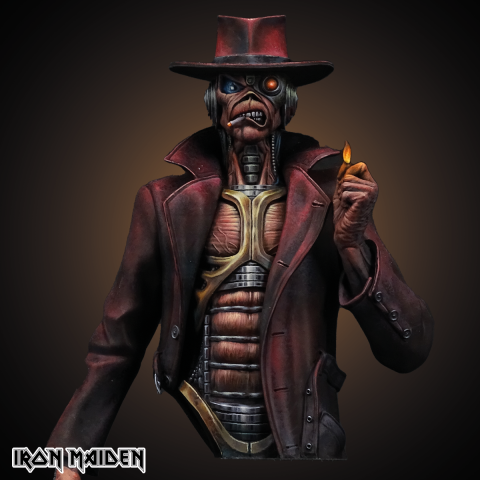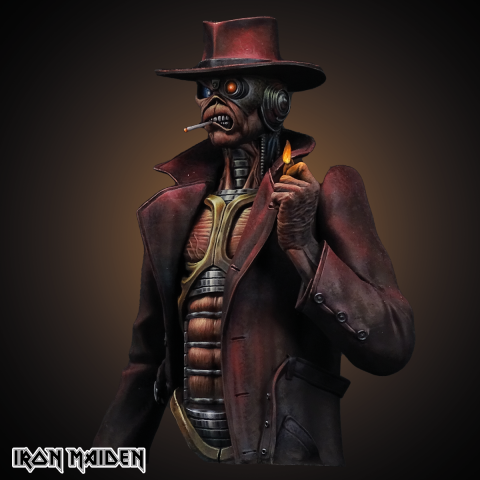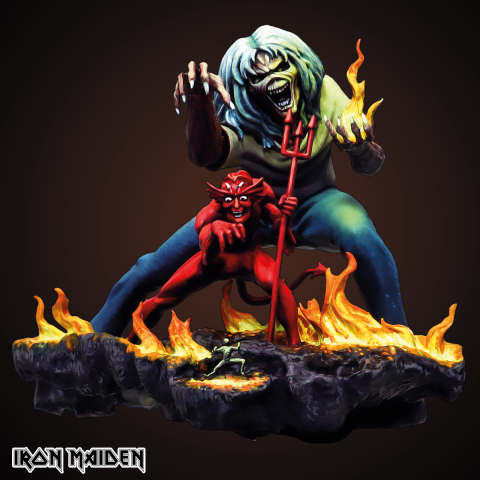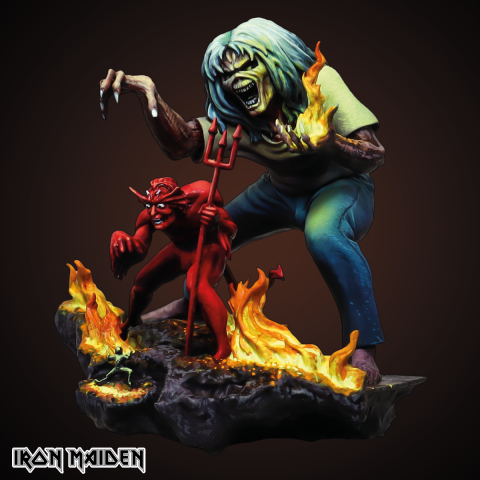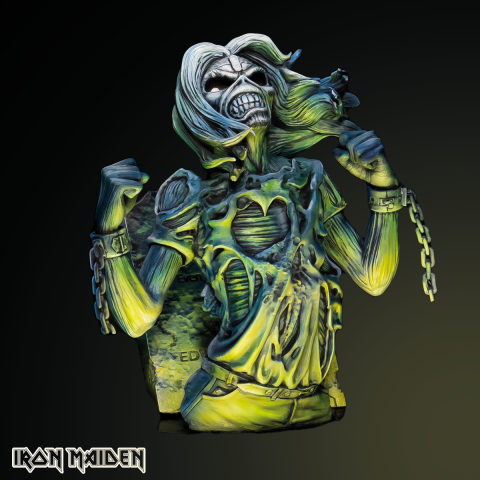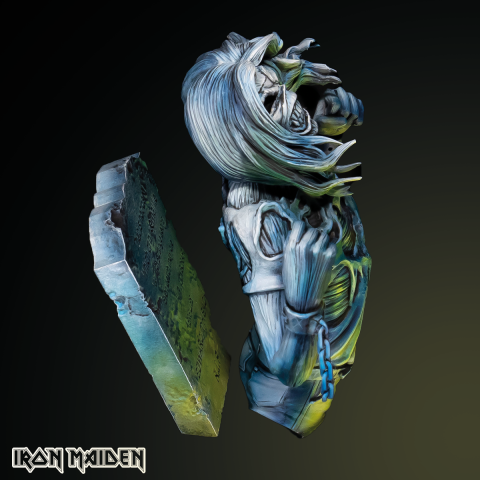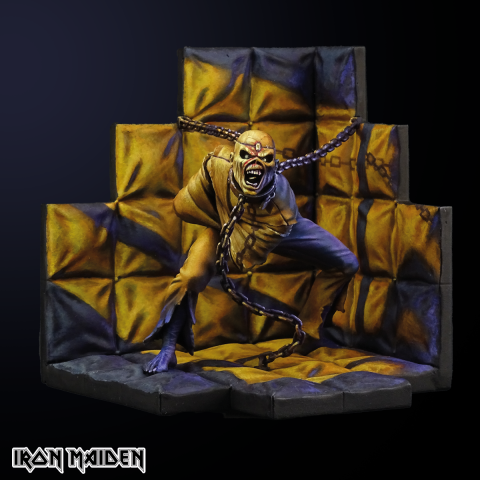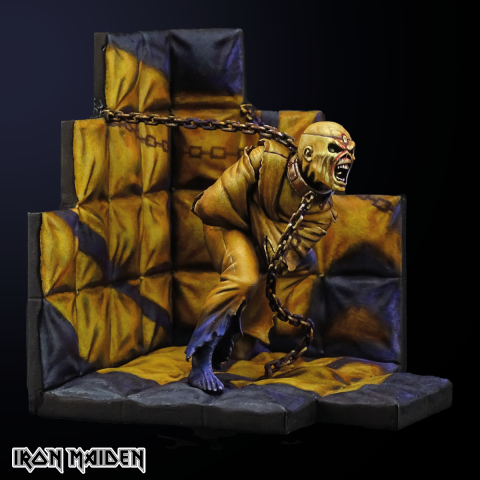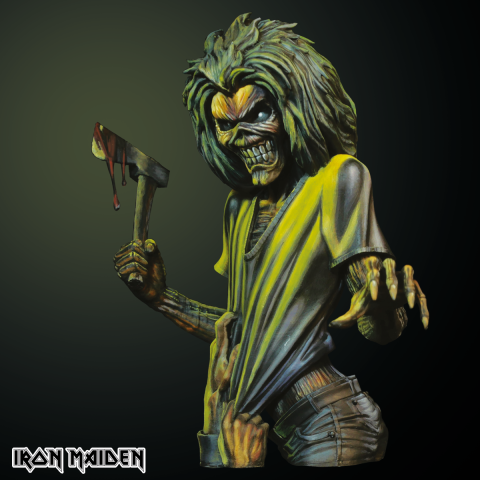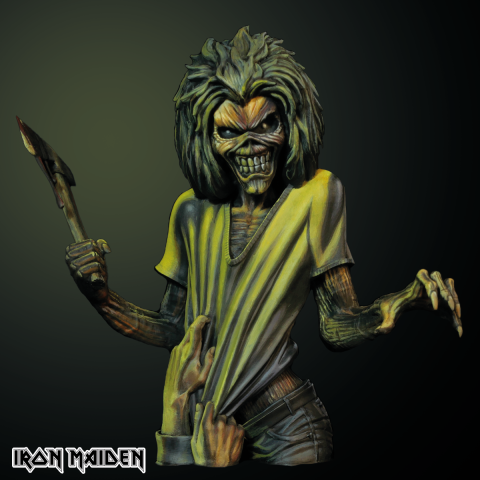NEW RELEASE - Senjutsu
What is in the box
Scale: 1/12 (150mm)
Material: High quality resin
Packaging: All pieces are safely packaged within a cardboard box in protective foam
Note:
- Figures/kits come unassembled and unpainted.
- Wooden plinth (base) is not included
Senjutsu is the seventeenth studio album by Iron Maiden, released on 3 September 2021. Their first album in six years, it was a critical and commercial success, praised for its ambitious epic scope. Two singles, "The Writing on the Wall" and "Stratego", were released to promote the album.
For Senjutsu (loosely translated as ‘tactics & strategy’), the band enlisted the services of Mark Wilkinson to create the spectacular Samurai themed cover artwork, based on an idea by Steve Harris. And with a running time of a little under 82 minutes, Senjutsu, like their previous record The Book Of Souls, is a double CD album/triple vinyl album.
This is an interesting interview of the artist talking about the build up of the artwork:
What were your first thoughts when you heard Steve wanted a samurai Eddie?
Steve had sent what we used to call at Art College a 'mood board' - a collage of pictures and reference material to act as a guide to what he had in mind for Senjutsu. There were a lot of Kabuki face-painting ideas and masks. He did say these can sometimes be too theatrical or over the top, but he wanted to show the menace and madness of some of them. There were also creatures from Japanese folklore, 'oni'. They are typically portrayed as hulking figures with one or more horns growing out of their heads and red-, blue- or white-colored skin, a huge mouth and fang-like tusks. There were samurai warriors and images of pagodas, suggestions of armor... a smorgasbord of ideas in other words!
How did you research and where did you draw inspiration from? What were your reference points - books, movies or actual artefacts?
I was not keen to simply plonk skeletal Eddie into the elaborately embroidered padded costumes of the early samurai.
I preferred the distressed metallic armor of the lower-caste warrior tribes that came later on in Japanese history - lots of tom cloth and rustic leather, heavy breastplates painted with tribal symbols held with dyed rope. I started with the face - with thickly applied Kabuki white face paint and red streaks. The fangs from the oni monsters then added an authentic Japanese look, which took Eddie into a different realm of menace.
Each time I've worked with Steve he's always wanted to create something so realistic and visceral with Eddie that he'd be your worst nightmare. Steve liked the black background from Book Of Souls, and suggested we kept the cover art simple, leaving the complex colorful 'reveal' reserved for the inside art again. With the red lettering and Hanko seal, the cover had that authentic indigenous Japanese look of the Edo period we were after.
The elegance of the battle stance with the sword and strategic poses of the samurai, mixed in with the horror of the make-up, would scare the bejeezus out of any enemy that dared face them... that was the mission statement of the samurai... and ours for Eddie too.
I looked at The Last Samurai and Seven Samurai films, bought a few books on samurai costume, and later on checked out the beautiful artwork from the Ghost Of Tsushima game. I also spent a day in the V&A Museum in London (pre-Covid) to look at the samurai exhibits, including the swords and armor. I wanted to get a feel for the helmets too, and learn how they were constructed.
What were some of the challenges of depicting samurai armour in such detail?
The materials used for the armor of the samurai changed through the years from the 4th to the 19th century, from the heavily decorated ornate layers of fabric and lacquer applied for extra protection to the later use of iron chest plates attached by colored rope. The basic shape of the samurai armor, katana swords and shape of the 'kabuto' combat helmet changed little in style however. The ear defenders or 'fukigaeshi', attached to the 'shikoro' (neck cowl) with the 'hachi' (helmet). They were all a mix of metal and/or leather - some had visors, which of course I avoided, as you wouldn't have seen Eddie's face at all then!
"I had to honor the sheer craftsmanship of samurai armor with that astonishing level of detail, it had to be perfect no matter what pose we had for Eddie as a samurai.
I suggested to Shacky... as the management were going to create an amazing animation for the first single, TWOTW, we commissioned a friend of mine, Michael Knowland, to construct a 3D model of Eddie's head and shoulders based on my designs so we could turn Eddie around and figure out a way to make it work. Michael is a brilliant 3D artist who was previously employed by Naughty Dog in San Diego on the first Last Of Us game as lead character artist. But he'd left there, moved to London and was taking on freelance projects. The timing was perfect."
Steve likes a nickname, and we heard he started calling you the tinkerer'.
"I went through dozens of ideas for Samurai Eddie and many ideas about backgrounds too. Steve always knew when I'd changed any detail... I called him 'Eagle-Eye' when he spotted something so he started to call me 'The Tinkerer', said he had me on speed-dial with that name and it sort of stuck! It was a football reference - Claudio Ranieri the Chelsea and Leicester City manager's need to tamper seemed almost out of control... constantly changing his squad and tactics. I used to drive Steve up the wall with my 'tinkering'... he'd say, 'Why have you changed it? I liked it exactly how it was before!' 'I think I've improved it,’ I'd reply. 'Well, you haven't - leave it as it was!' He'd laugh - it was always good humored."
Aside from the japanese aesthetic, what are the challenges of getting eddie right?
"I'm well aware that I'm dealing with one of (if not the) most recognizable 'brands' in music history, Eddie is an institution as far as the fans are concerned. I always say (if asked) that the artists that came after Derek Riggs are caretakers of his brilliant creation if you don't respect that, then you are fooling yourself. However... there's not much point in simply recreating the same thing over and over again... or attempt a pastiche in the same style as Derek, which would be disrespectful.
I think I brought something new to the party, a visceral realism that took me a long time to get right."
What can you tell us about the beautiful pagoda reveal? It was quite the surprise when the album arrived with people.
"Steve always had it in his mind to have a simpler image for the Senjutsu cover and (as with The Book Of Souls) the big scene inside. To begin with I was just asked to design a pagoda, which I started after the first Eddie was done. But the timelines shifted when the album was put back due to Covid. I then had a lot more time to spend on the pagoda and Steve suggested we go for a full battle scene.
It came together (as you would expect from me) slowly! Very slowly because I was still adding extra Samurai Eddies for the packaging. I would down tools on the pagoda scene... tinker a bit more on, say, the full body design so Michael could complete the 3D model, then return to the pagoda scene. Stuart Crouch designed some flags so I was asked to put a few of those in, there were dead bodies to paint and arrange in an - ahem - artistic manner... then Steve suggested adding the two huge stone lanterns each side to create more depth as the aerial perspective was so widescreen. It turned into an immense project, that inside artwork... Eighteen variations in all before I got it right and Steve signed off!
Interview by https://www.ironmaiden-bg.com/web/index.php/senjutsu-artwork-en














